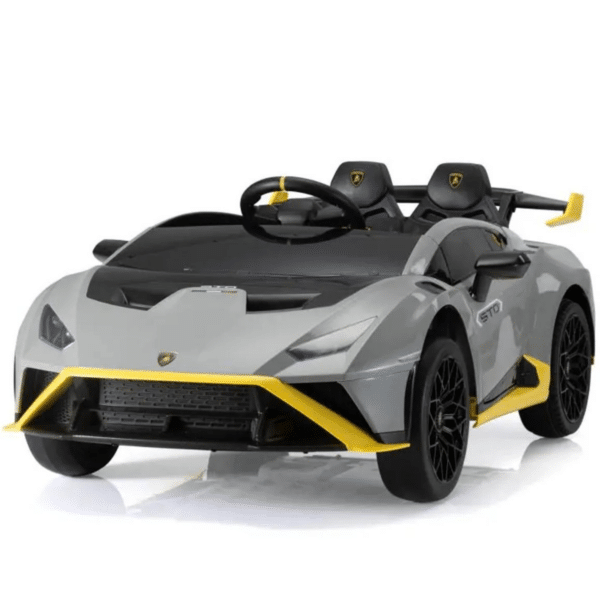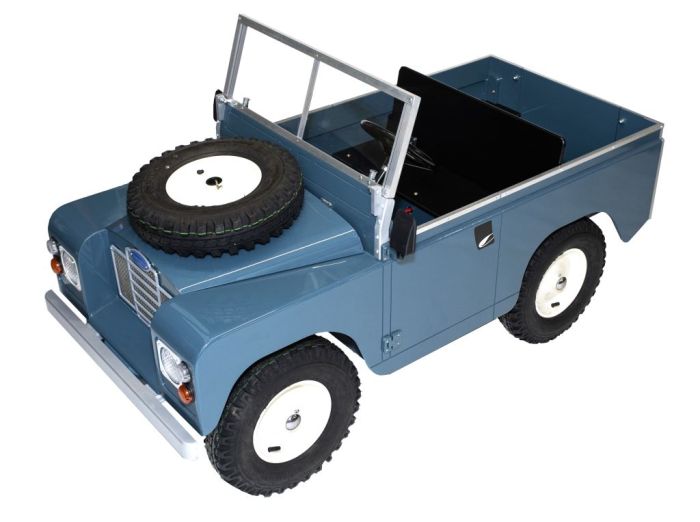Excellent Advice To Choosing Kids Cars
Wiki Article
What Safety Features Of The Ride-On Car Should I Consider? What Are The Pros And Cons?
Safety features are essential to think about when selecting a ride-on vehicle for your child. This will ensure your child is safe during playing time. Seat Belts and other safety features are essential.
Seat belts are a great way to ensure your child's safety within the car ride. It reduces the risk of them falling or being thrown from the vehicle while playing. They also provide extra protection especially in sudden stops or changes.
Cons - Some rides-on-cars do not include seat belts. This is especially true for those that are made specifically for children. In addition, kids may feel uncomfortable with seat belts or restrictive, leading to resistance or refusal to use them.
Sturdy Construction
Pros – A ride-on made of strong construction and top quality materials is durable and resistant and can provide security and dependability for a long period of time. It is durable and stable enough to stand up to the demands of playtime.
Cons – Durable construction comes at a high price, which can make it out of reach for a lot of families. Additionally, the weight of the materials can affect the mobility and maneuverability.
Low Center of Gravity
Pros: Cars with low centers of gravity have a lower chance to topple over and reduces the chance of injuries or accidents. They are more stable and provide more balance, especially during turning and maneuvers.
Cons - Certain ride-on cars that have a low center of gravity may sacrifice the ability to drive off-road or ground clearance, limiting their versatility in certain conditions.
Parents Remote Control
Pros - Remotely controlled ride on vehicles allow parents to supervise, assist and supervise their children's play. They also provide a higher security as well as parental supervision. Parents can intervene if an emergency occurs, navigate tricky terrain or stop collisions.
Cons The remote control of parents may hinder the autonomy and independence of children, since they depend on their parents' assistance and direction in play. In addition, models which can be controlled remotely may be more expensive than models with manual controls.
Speed Limiters Speed Limiters
Pros: Ride-ons equipped with speed limiters and adjustable speed settings allow parents to set the maximum possible speed for their car. This can reduce the possibility of a crash or collision. They can increase speed gradually as the child grows confident and acquires the capabilities.
Cons - Some kids will get bored with lower speed settings, which can lead to frustration and discontent. Certain models don't come with speed limiters or require accessories or other features.
Safe Start Technology -
Pros - Safe start technology ensures that the ride-on automobile starts and stops without a hitch, eliminating the danger of sudden lurches or jerks which could cause panic or even harm the child. It helps make riding more comfortable and safe.
Cons: Cars that are ride-on equipped with safe-start features may cost more than standard models. Additionally, kids may not find the gradual acceleration to be more interesting or exciting than quick starts and stop.
Visibility Enhancements
Pros - Ride-on vehicles equipped with enhancements to visibility, such as functioning taillights, headlights or reflective materials increase visibility, particularly in dim conditions or dimly lit areas. They improve safety as they help make the vehicle more visible to other cars or pedestrians.
Cons - The addition of the features that allow for visibility could make it more difficult for battery to drain or within the design of the ride-on car. These issues could cause malfunctions or maintenance problems.
If you take a look at these safety features and considering their advantages and disadvantages, you can pick an auto ride-on that will prioritize your child's safety, while also providing an enjoyable and fun play experience. Have a look at the top JCB ride on toys for more recommendations including childrens electric ride on, car for toy, remote control childrens electric cars, ride on toy, ride of car, kids electric cars, toy cars toy car, 2 seater electric cars, car electric ride on, 2 seater electric cars and more. .

What Are The Assembly And Maintenance Requirements For Kids' Ride-On Vehicles?
To ensure safety and durability For safety and longevity, many ride-on toys for children require assembly. These are the most common assembly and care requirements for children's ride-on car.
The majority of ride-on cars are assembled and require some assembly on the arrival. Attaching the components, such as wheels, steering wheels, and seats, according to the specifications of the manufacturer, is a common practice.
Assemble the parts according to the instructions. Utilize the tools and equipment to complete the assembly.
Cleaning
It is important to clean the vehicle's ride-on regularly in order to maintain its appearance and performance. Make use of a soft cloth that has been dampened with water and mild soap to clean exterior surfaces.
Pay special attention to places that are prone to accumulation, such as the tires, wheels, and undercarriage. Utilize a toothbrush and brush to clean the hard-to-reach places.
Do not use harsh cleaners or water jets that are high-pressure which could harm the paint and electronic components on the car.
Battery Care –
The battery in the car that rides on it must be taken care of in a timely manner to ensure that it performs well and lasts as long as is possible. Follow these tips for caring for your battery for proper care of your battery
It is essential to charge your battery fully prior to and after every usage to ensure you get the most from it.
Avoid charging batteries excessively or allowing them to be connected to chargers for long durations. This can cause damage to batteries and reduce the lifespan.
When not in operation make sure to keep the battery and ride-on cars in a location which is cool and dry and far from extreme temperatures and direct sunlight.
The battery terminals must be examined regularly for damage and corrosion. They may also be cleaned with wire bristles or terminal cleaner if required.
If the battery no longer charges or displays signs of wear, replace it.
Tire Maintenance -
Check your tires regularly for signs of wear, damage or a loss of air. If necessary, fill the tire to the recommended pressure using a bicycle compressor or pump.
Examine the tread pattern on your tires to identify obstructions and foreign matter that could cause punctures or flats. Removing obstructions, and replacing damaged tires or repairing them when required.
Lubricate the wheel bearings and axles at regular intervals to decrease friction.
Occasional repairs or replacements
Even with regular maintenance, it is likely that vehicles with ride-ons will need to be repaired or parts replaced due to wear and tear or accidents.
Be alert for indications that your system is failing or is deteriorating, such as unusual noises or behavior, power loss, or other signs of trouble. It is possible to consult the manual for users or contact support at customer service to assist with repair and troubleshooting.
To avoid further damage replace worn-out or damaged components as soon as you can to ensure the safety of your equipment and its functionality.
You can make sure your child's rideon car is in good working order by adhering to these assembly and maintenance guidelines. Your child will enjoy numerous hours of safe enjoyable and thrilling playing time. View the recommended find out more on remote control childrens cars for more examples including two seater electric cars, childs electric ride on car, car on ride, race car toy car, childrens ride on, riding digger, toy with car, ride on car, ride of car, race car toy and more. .

What Are The Possibilities For Children's Remote-Controlled Vehicles? What Are The Benefits And Disadvantages?
Remote control cars for children Also known as RC or remote-controlled cars, are available in a variety of sizes, styles and costs. They're designed to fit the needs of different budgets and tastes. Here's a listing of the different types of remote control kids' cars, including the dimensions, cost ranges as well as pros and cons.
Electric RC Cars - Battery-powered remote-controlled vehicles that are suitable for both outdoor and indoor use. They come in a range of designs like buggies, trucks and sports cars.
Nitro RC Cars – Gas-powered remote controlled cars with higher performance and speeds However, more expertise and maintenance is required in order to operate. They are generally larger and more costly than electric RC car.
Scale Models: Remotely controlled replicas including real vehicles such as cars, trucks, planes and boats. Scale models can be found in a variety of sizes, ranging from 1-10 to 1-24. The larger scales provide more detail and realism.
Sizes -
Children's remote-controlled cars are available in various sizes. The range of sizes ranges from tiny replicas to large-scale models. The size of the vehicle could impact its speed, performance and braking characteristics.
Micro-sized vehicles are compact and lightweight, making them perfect for indoor use and play by younger children. The larger models offer greater power and durability, making them suitable for off-roading and racing.
Prices
The prices of remote control cars for children vary based on various factors, including dimensions, features, brands and the build quality.
Smaller electric cars can be bought for between $20 and $100 while larger electric and nitro-powered RCs can cost between $100 and $500 or more.
Models and high-end hobbies RC cars range from a few hundred to more than a 1000 dollars, depending on the level of detail.
What are the pros and cons?
Pros -
Entertainment - Remote controls for children's vehicles provide endless entertainment and fun for both adults and children.
Skills Development. The operation of a RC vehicle helps children develop hand-eye coordination, spatial awareness and problem-solving abilities.
Social Interaction RC cars can be enjoyed with families and friends, encouraging social interaction and cooperation.
Customization – A lot of RC cars can be customized using aftermarket modifications components and accessories that improve performance and look.
Cons
Cost - High-end models that have advanced features, like hobby-grade cars, can be quite expensive.
Learning Curve - Operating an RC car requires practice and skill, and younger children might struggle when it comes to the controls at first.
Maintenance - Vehicles with RC engines need regular maintenance. This includes cleaning, lubrication as also periodic repairs and replacement of parts.
Safety Risks RC cars can pose safety risks, including crashes, falls and electrical hazards, if not utilized in a responsible manner and with adult supervision.
Remote control cars for children provide a fascinating enjoyable and educational experience. But, it's crucial to select the appropriate model based on aspects such as size, safety, price and features. The hobby-grade RC cars may be best suitable for older children or enthusiasts. Simpler models are best for beginners and younger children. Follow the best McLaren kids car for site recommendations including ride on car, race car toy, childrens ride on, kiddies cars, toy with car, a toy car, toy ride, car toy car toy, childrens digger, lambo toy car and more. .
